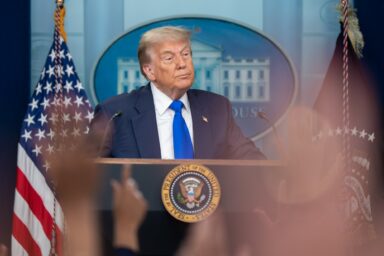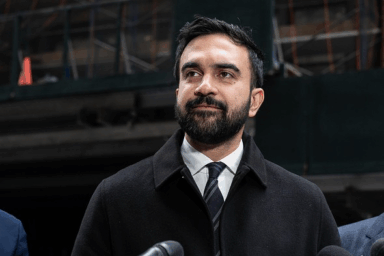When Election Insanity Met Better Media
WhoWhatWhy’s Key Lessons Learned From Our Unique Approach to Political Coverage
In a time of despair, the road to fixing things runs right through the media: our main source for information about what is going on — and why. Here, WhoWhatWhy looks back on our experiment in a different kind of political coverage for the 2016 election.
The full story of the 2016 election will not be told for a long time. The results will be dissected and analyzed for months, campaign staffers will spill the beans, and dirty laundry will be aired.
With just a handful of days to go before we will (probably) know who the next president is going to be, we thought it would be appropriate to tell you our story of the 2016 election.
WhoWhatWhy is a unique media organization but not a large one. So early on, we had to figure out how our team of part-time editors, freelancers, and volunteers could make an impact on what might just be the most covered event in history.
We decided there was no point in covering the “horse race.” After all, thousands of other reporters would be covering that aspect of the election ad nauseam.
Instead, we focused our limited resources on an important area that is overlooked: the integrity of the vote. We also covered campaign finance, kept an eye on the media, and did a few “long reads” on various aspects of the race.
Potential Impact of Foreign Hackers
.
Throughout the campaign, WhoWhatWhy had a nose for what would become news down the road. All the way back in August 2015, nearly a year before the hacked Democratic National Committee (DNC) emails were made public, we warned about the potential impact foreign hackers could have on the election. Here is how that article began:
What if a foreign head of state had the power to handpick our next president? It sounds like the plot of a movie, but it actually might be in the realm of possibility.
Impact of Tech Giants
.
In the same month, we ran another story that was way ahead of its time. Long before a major controversy erupted over whether Facebook censored stories of conservative news outlets — and long before the corporate media started talking about how Silicon Valley’s tech giants could influence an election with their algorithms — we were already on the case. Here is what we concluded:
Our Internet society is clearly giving Google — and other tech giants like Facebook and Twitter — immense power, similar to the influence that the three major television networks once enjoyed.
It is not inconceivable that one corporation could, intentionally or inadvertently, decide the outcome of a future election. Indeed, we have no way of knowing if it already has.
A Manipulative Press and Bernie Sanders
.
In July 2015, we took an investigative look into how conservative websites, in particular the Drudge Report, gave Bernie Sanders an important assist by fawning over the ideologically opposed senator from Vermont.
More than three-fourths of the stories on Sanders that Matt Drudge put on his site were favorable to Sanders, while nearly 90% of the stories covering Clinton were negative. This positive coverage coincided with Sanders’s rise in the polls that eventually took him from a lightly regarded sparring partner for Hillary Clinton to the outsider who came incredibly close to upsetting her in the Democratic primary.
By the way, the same story also highlighted how Donald Trump quickly became a favorite of the Drudge Report. It was a bromance that continues to this day.
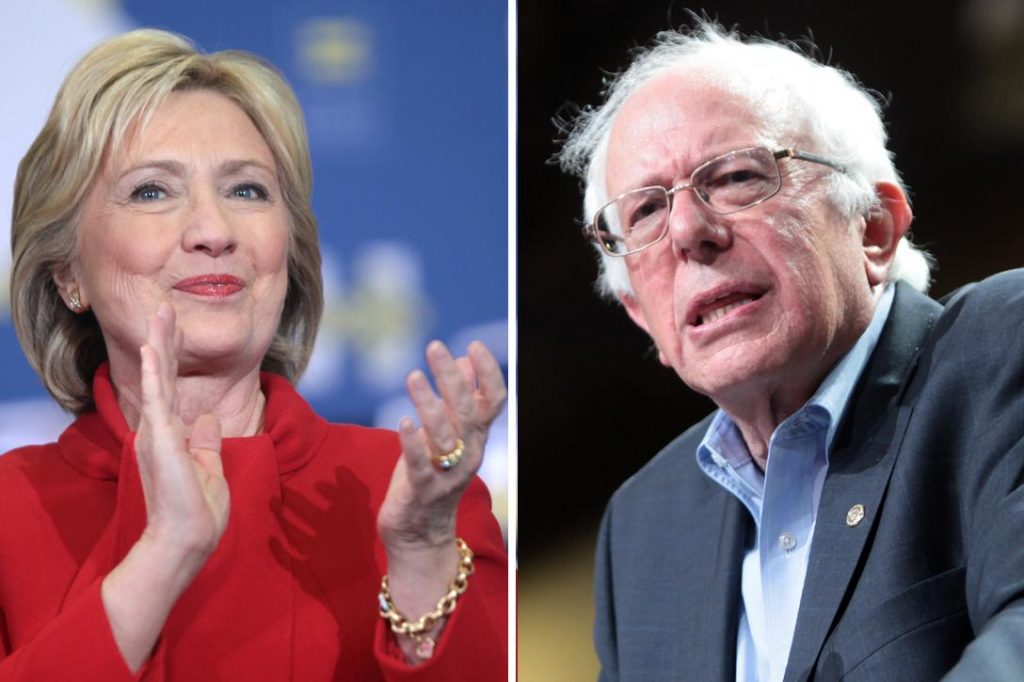
Photo credit: Gage Skidmore / Flickr (CC BY-SA 2.0) and Gage Skidmore / Flickr (CC BY-SA 2.0)
However, while Sanders was a favorite of conservative outlets, the mainstream media began to turn on him when it became clear that he had a real shot of winning the nomination. And we predicted as far back as May 2015 that he could seriously challenge Clinton — back when he was still polling in the single digits.
And we were there to cover when the media did turn on him. Whether it was The New York Times burying the news of another good night for Sanders or helping Hillary hide the hawk, The Washington Post running four stories in one day maligning the Vermont senator’s tax plan, or the Clinton media machine working to obscure Sanders’s civil rights record, we tried to keep the mainstream media honest.
But while Sanders will certainly be one of the most tragic figures of the 2016 election narrative, we certainly weren’t in the tank for him. Sure, we wrote a lot of favorable pieces about him, for example, how he was hurt by refusing to go low, how he rewrote the campaign finance rulebook, how Clinton borrowed heavily from his ideas, and how the DNC screwed him one last time in Philadelphia. However, that seems appropriate because he was a breath of fresh air in this race that seems to be tearing the country apart.
Still, we also wrote some critical stories of Sanders, for example when the left questioned his bona fides.
We also didn’t buy into every theory that claimed that the Vermont senator was the victim of a conspiracy. One of our long reads took a very close look at the rumor that a New York election official responsible for purging more than 100,000 voters from the rolls had been paid off by a Clinton ally. After a thorough investigation, we concluded that there was nothing to it.
Primary Irregularities
.
However, we did cover irregularities that took place during the primaries. We began that part of our coverage with a long piece on the reliability of New Hampshire primary results. Our stories on misleading election mailers in New York State that might have helped Clinton received a lot of attention. (We also wrote a similar piece on California). A follow-up piece on the many problems of the New York primary found a wider readership as well. Another long read explored how the Supreme Court’s controversial Shelby County v. Holder decision played a major role in the purging of New York voters from the rolls.
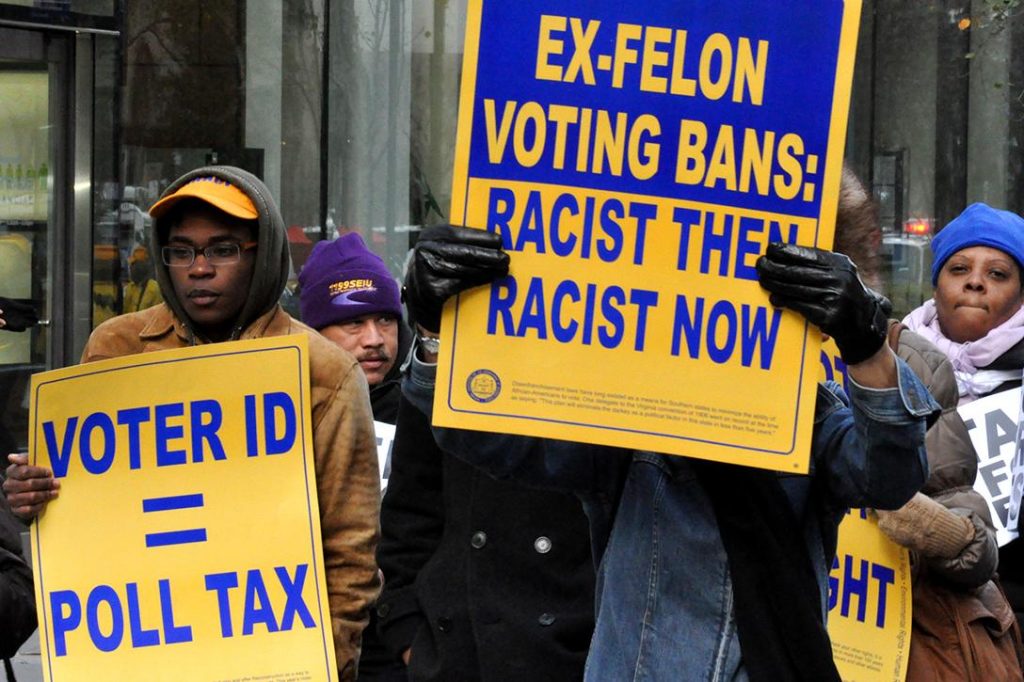
Voter Suppression
.
Which brings us to one of the main areas of our coverage: voter suppression.
We looked at different battleground states to see how they would be affected by Republican-controlled state legislators who wanted to tilt the playing field. The first big story in this series was this one on voter suppression and the Virginia GOP.
Most recently, we reported on the legal battle over the disenfranchisement of Ohio voters, and we’ll try to run a piece on Florida over the weekend. We covered court decisions that paved the way for more Americans to vote, highlighted the dirty tricks of election thieves and the legal disenfranchisement of felons, and we dedicated a cartoon and editorial to this topic.
We covered the issue of voting machines extensively — most recently with a long feature and a podcast. While we offer podcasts on a wide range of subjects, we paid special attention to the election these past weeks. In October our guests included a historian who put Trump’s rise into historical context and an author who discussed the taboo topic of the role that class plays in American elections. We also presented a series of relevant videos, including ones on gerrymandering, voter suppression and voting machine hacking.
Campaign Finance
.
One area that we intensively focused on early in the election cycle was campaign financing. Six months before the first primary votes were cast, we ran several stories on this issue. For example, we called out “shadow candidates” like Jeb Bush, as well as the Federal Election Commission (FEC), for failing to enforce national campaign finance rules. If you want to find out some of the most egregious violations, just check out this comprehensive story.
We are not the only ones who think the FEC is a mess. In an exclusive interview with us, FEC Commissioner Ann Ravel called her agency “scandalous.”
And we showed that even a small publication can have a big impact when it keeps digging. Our investigation into Trump’s solicitation of donations from foreigners resulted in a criminal complaint being filed against his campaign. Look for an update on this story in the coming days.
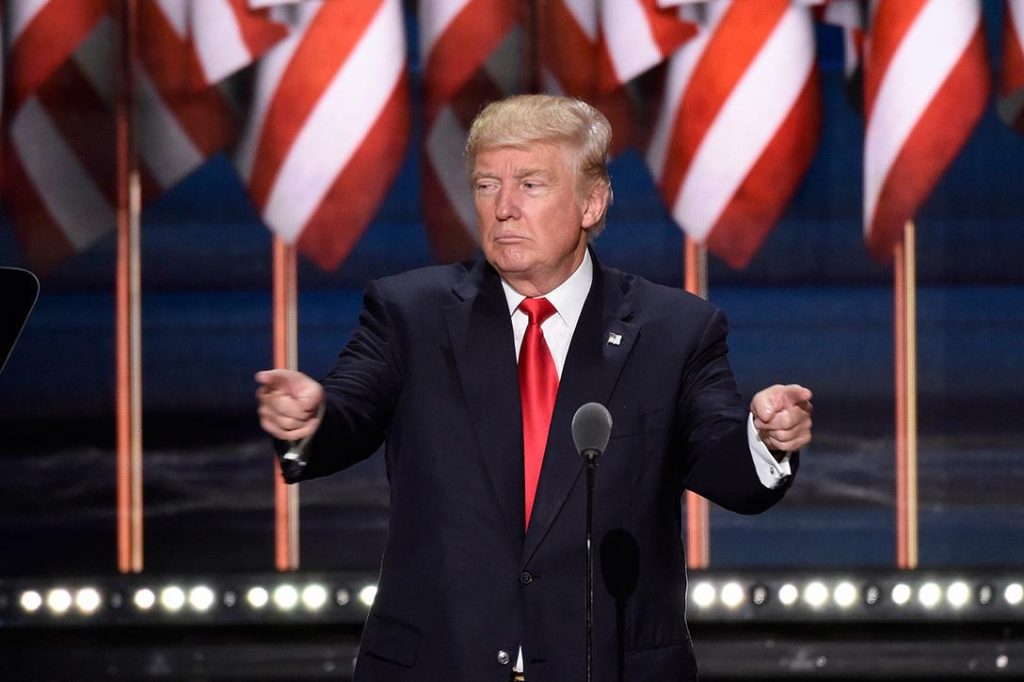
Photo credit: Disney | ABC Television Group / Flickr (CC BY-ND 2.0)
One quick word on the “little guys.” We wanted to extensively cover Libertarian candidate Gary Johnson and Green Party candidate Jill Stein. However, both campaigns completely froze us out. We contacted each of them multiple times, asked for interviews and sent them questions. We even sent a reporter to a Stein event but were not allowed to interview her. Their silence is particularly baffling since a lot of the topics we cover are in their policy sweet spot, and it is fair to say that there are probably more Green Party and Libertarian Party supporters among our readers than the population in general. Unfortunately, we all lost because of their refusal to to answer our questions. It certainly wasn’t for a lack of trying.
A bright spot for us was that we were able to send a reporter to both the RNC and DNC conventions for the first time. Instead of covering the speeches and the pomp, we were out on the streets to talk to real people. At the Republican convention in Cleveland, for example, we found some rare areas of agreement: Both Trump supporters and opponents agreed that the underlying theme of this election is race. And we found a common bond between Trump’s most ardent supporters and backers of Bernie Sanders: their deep distrust and dislike of Clinton.
In Philadelphia, we let the mainstream media celebrate the coronation of Clinton. Instead, we paid one last tribute to Bernie Sanders and the movement he created.
As we got closer to November 8, we focused on what would happen at the polls and, once again, we were ahead of the curve. We were the first in the US to report the plans of the Organization for Security and Cooperation in Europe (OSCE) to send hundreds of observers to scrutinize the election. And just last week we again beat the mainstream media when we wrote about these OSCE observers sounding the alarm.
Our scoops show that we were on the right path, identifying important stories months before much better funded news organizations did.
On the other spectrum of poll watching, we pointed out that Donald Trump’s poll watchers are more likely to do harm than good. It is one of those issues on which we hope that we are wrong. We want all Americans to be able to peacefully exercise their right to vote.
Hillary Clinton
.
We did also cover the candidates, of course, but we wanted to do it in a way that was different from everybody else’s. We have been covering Hillary Clinton for years, going back to the beginnings of WhoWhatWhy.
In addition to the many stories we did on her during the primary (referenced above), we recently did a long article on Clinton adviser Sidney Blumenthal, who had somehow managed to fly below the radar this election cycle. And, of course, we covered the other Clinton highlights. We wrote about Emailgate, for example, by questioning the timing of the first story on it, offered some perspective on Benghazi, and the leaked Podesta emails.
We also urge people to look at our recent story that ties together our coverage regarding Clinton’s Libya debacle.

Photo credit: Trump The Movie and Marc Nozell / Flickr (CC BY 2.0)
Donald Trump
.
One major way we contributed to the coverage of Donald Trump was by running a documentary that the Republican nominee had tried to suppress. We split it up into 12 parts and several of them are among our most shared stories of all time. The documentary was made 25 years ago when Trump was first making noise about running for president. It is certainly worth watching.
We also ran several long features on Trump. For example, we investigated whether there is any evidence that he is or has ever been a “strong Christian.” There is not, but he used the claim to appease the religious right and as one of his many excuses for not releasing his tax returns.
Also, long before others reported that Trump’s “alt-right” supporters are bullying opposing voices, we wrote a long feature on the ugly noises some of his backers were making online.
But that’s just a sample and we are sure that we left out some of our more important pieces. For our complete coverage, just browse through our archives. Some stories relevant to the election also defy classification, such as this article that asks whether upward mobility is a thing of the past and a two-parter on the bleak situation of American workers.
There are certainly areas in which we wished we could have done more if we had the means. We are proud, however, of the balanced work we have done. Of course none of this would have been possible without the assistance of our readers. A special thanks goes out to those who contributed. Since we don’t run ads or accept money from corporations, you literally keep this site running.
We are also grateful to all of you who are engaged. Even your criticism motivates us every day to be better, so thank you for your comments, story ideas and words of encouragement. Please continue to help spread the word about WhoWhatWhy by sharing our stories. That is the only way for a non-profit news organization to grow.
In one way, this has already been a very successful year for us. As we mentioned above, a lot of the people who work at WhoWhatWhy are volunteers. This year, we initiated an apprentice program through which we help young journalists, many of them still in college, find their footing in this profession. In return for their time, we provide tutelage. We are happy to announce that this pilot program has been a great success. Some of “our kids” have found permanent positions at other news outlets and they have credited their WhoWhatWhy education for their success. We are sad to see them go, but we are happy for their achievements. That, too, would not have been possible without your support.
If you know anybody interested in getting a start in journalism, please send them our way. We’ll take good care of them.
And now let’s sit back and see what happens on Tuesday. And when the dust settles, we’ll be right here, ready to hold the feet of the next president to the fire.
Related front page panorama photo credit: Adapted by WhoWhatWhy from Hillary Clinton (Gage Skidmore / Flickr – CC BY-SA 2.0) and Donald Trump (Marc Nozell / Flickr – CC BY 2.0)

